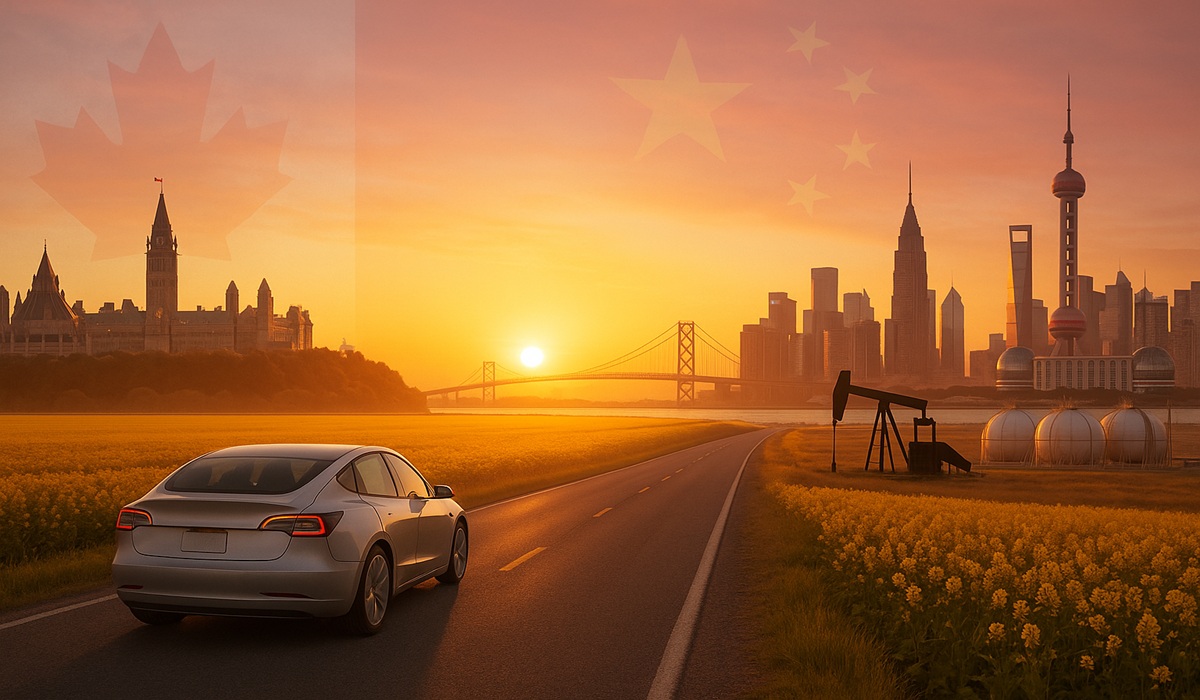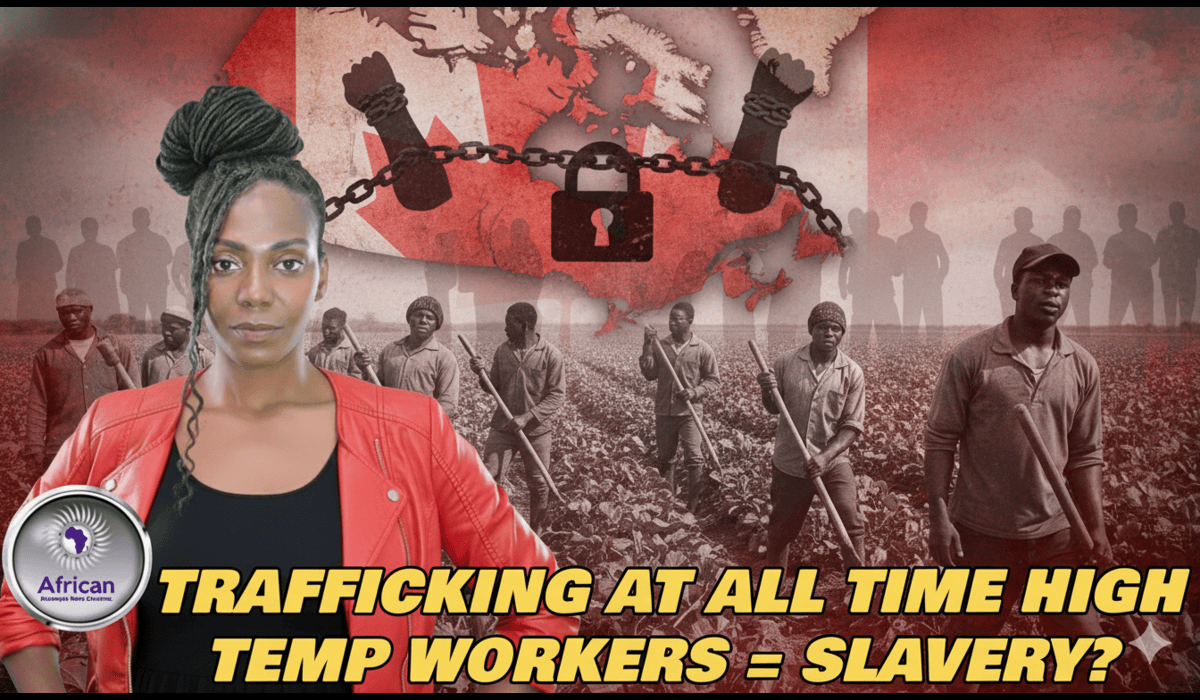By Donovan Martin Sr, Editor in Chief
The past week has marked one of the most significant turning points in modern Canadian foreign policy—one that could quietly reshape the country’s economic trajectory for decades to come. It began with a meeting few expected and even fewer understood in its full magnitude: Prime Minister Mark Carney’s conversation with China’s Premier at the United Nations. On the surface, it appeared to be just another diplomatic courtesy. But in reality, it was the first signal that Canada and China were ready to thaw a relationship that has been frozen in mistrust and missteps for years.
That meeting set in motion a chain of events culminating in a remarkable announcement by China’s Ambassador to Canada, Wang Di. His statement was as direct as it was conciliatory: if Canada removes what Beijing considers “unjustified tariffs” on Chinese electric vehicles (EVs), China will reciprocate by lifting its tariffs on Canadian canola. To many, it may sound like a small gesture in a long, complicated trade narrative—but to those who understand the delicate web of international trade, this is seismic.
To understand the weight of this announcement, we have to revisit the past few years. When the Trudeau administration followed the U.S. lead by imposing tariffs on Chinese EVs, it was meant to show solidarity with Washington’s “fair trade” stance. But the decision backfired—badly. China retaliated, targeting one of Canada’s most vital exports: canola. For a country that produces nearly 40% of the world’s supply, the fallout was immediate. Farmers suffered. Export numbers plunged. Billions were lost. That was not a strategic move—it was a miscalculation born of pressure, not principle. The policy served American interests but undermined Canadian ones. Today’s developments signal a long-overdue correction. Removing those EV tariffs doesn’t just patch a diplomatic rift; it restores balance to a relationship where economics, not ideology, should lead.
If Canada follows through and lifts the tariffs on Chinese EVs, both sides stand to gain immensely. For one, China’s EV sector has become the gold standard of innovation. Companies like BYD, Huawei, and Xiaomi have already surpassed Tesla in several markets, setting new benchmarks in range, battery efficiency, and affordability. Canadians, who have faced escalating vehicle prices and limited options, will finally have access to world-class EVs at competitive prices. On the other side, China will reopen its massive agricultural market to Canadian canola—an essential source of revenue and rural stability. Ambassador Di’s additional comment that China has “capacity for more Canadian crude” further widens the opportunity. If realized, this could inject billions into Canada’s energy economy, open doors for new LNG projects, and even revive long-dormant port infrastructure such as Churchill, Manitoba. There are murmurs that expansion projects could also touch the East Coast, revitalizing shipping routes and job creation in regions that have struggled for decades.
Foreign Minister Anita Anand’s current visit to Beijing is not coincidental. The trip, planned weeks in advance, has become perfectly timed to capitalize on this shifting diplomatic mood. Her presence signals that Canada is no longer content to sit on the sidelines of the world’s fastest-growing markets. It’s a statement that economic sovereignty matters more than maintaining appearances with allies who often treat Canada as a junior partner rather than an equal one. And therein lies the heart of the issue: trust. For too long, Canada’s economic policy has mirrored Washington’s priorities rather than its own. While shared values remain the backbone of the Canada–U.S. alliance, shared interests have begun to diverge. The recent remarks by the U.S. Commerce Secretary—essentially warning Canada not to pursue independent deals with China or risk seeing American automakers move south—illustrate a troubling dynamic. Friendship shouldn’t come with ultimatums.
This is not a partisan issue. Whether under Trump’s “America First” policies or Biden’s “Buy American” framework, Canada has found itself on the receiving end of arbitrary tariffs, shifting trade rules, and veiled threats. These have harmed Canadian steel, lumber, dairy, and now the auto industry. Each time, Canada was told it was for the “greater good” of continental stability. Yet the pattern has been one-sided: the U.S. protects its industries while Canada absorbs the economic shock. The question Canadians are increasingly asking is simple—what kind of partner threatens your jobs and markets every time you exercise independence? The answer is uncomfortable but necessary. If the U.S. insists on weaponizing trade policy, then diversification isn’t betrayal—it’s survival.
China, for its part, has been quietly waiting for such an opening. By extending an olive branch through trade reciprocity, Beijing is not merely appealing to Canadian farmers or automakers—it’s testing whether Ottawa can make decisions based on its national interest rather than its alliances. This isn’t a trap. It’s a chance for Canada to practice true diplomacy: pragmatic engagement without political theater. The logic is straightforward. Canada gains access to the largest EV manufacturing ecosystem in the world while regaining lost agricultural and energy markets. China gains goodwill and reliable suppliers of quality commodities. Both sides win, and global markets stabilize. The U.S., meanwhile, will have to adjust to the reality that Canada is not an appendage—it’s a sovereign actor.
Industry insiders are already whispering about the next logical step: local EV manufacturing. If tariffs fall and relations continue to warm, Chinese firms could look to set up assembly plants in Ontario—precisely at a time when U.S. companies are threatening to relocate operations to the southern states. Such an investment would be transformative. It would stabilize Ontario’s auto belt, create thousands of jobs, and trigger spin-off industries from parts to logistics. There’s also talk of South Korean firms seeking a foothold in Canada after recent tensions with the U.S.—including reports of harsh ICE raids on South Korean factories. If those partnerships materialize, Canada could suddenly become the most diversified manufacturing hub in North America, connected to Asia’s fastest-growing supply chains while maintaining access to U.S. consumers. That’s the definition of strategic balance.
What’s unfolding now is more than a trade story. It’s the redefinition of Canada’s global identity. For decades, foreign policy was framed through proximity to the United States—physically, economically, and psychologically. That era is fading. The new reality is multipolar, where influence and prosperity depend on flexibility, not allegiance. To say Canada is “decoupling” from the U.S. may be premature, but it is certainly disentangling itself from dependence. That’s not anti-American; it’s pro-Canadian. And in a world where protectionism is rising and alliances shift overnight, pragmatism is the only sustainable doctrine.
In the coming months, the headlines will focus on tariffs, ports, and energy exports. But beneath those numbers lies something deeper—a quiet transformation in how Canada sees itself in the world. By normalizing trade with China, Canada is asserting its right to define its own economic destiny. If done with caution, transparency, and strategic foresight, this could mark the beginning of a new era—one where Canada no longer reacts to global pressures but shapes them. The lifting of tariffs on EVs and canola may sound like bureaucratic adjustments, but they represent something larger: the return of Canadian confidence. A country willing to trade, engage, and compete on its own terms. And in that, there is something profoundly hopeful.









